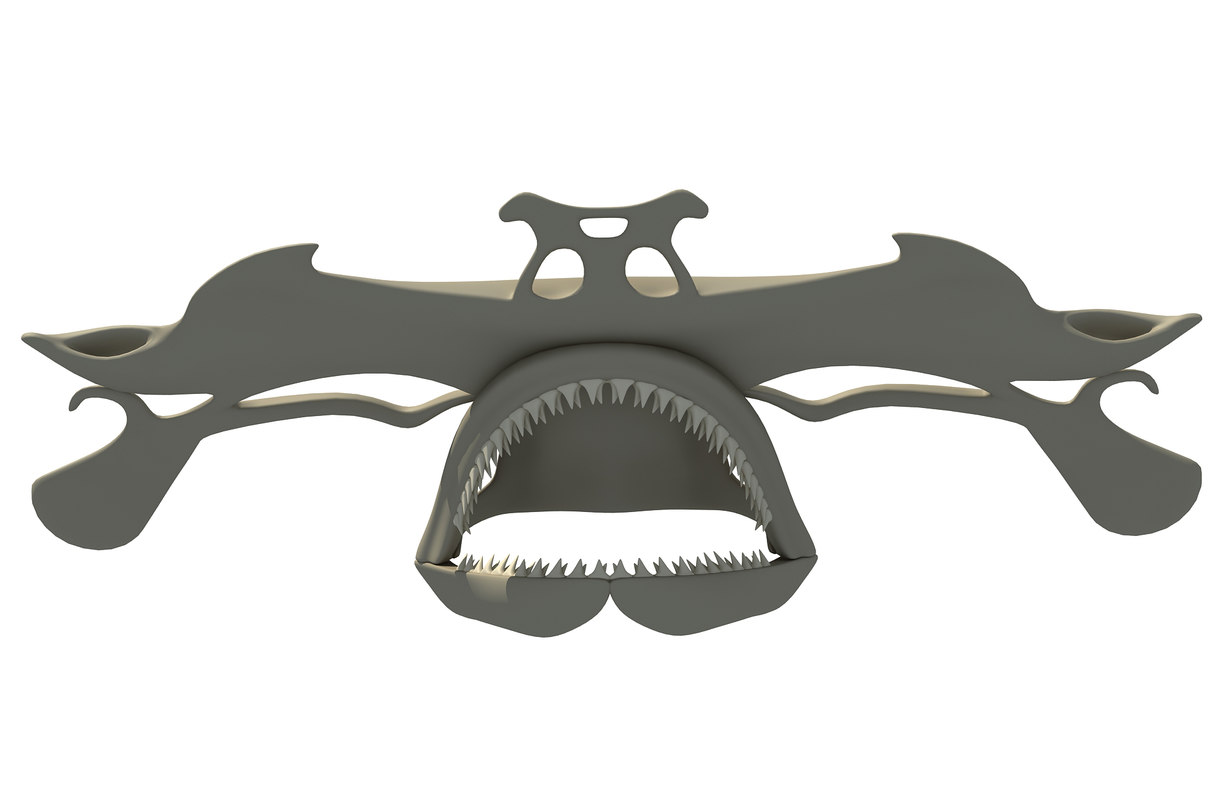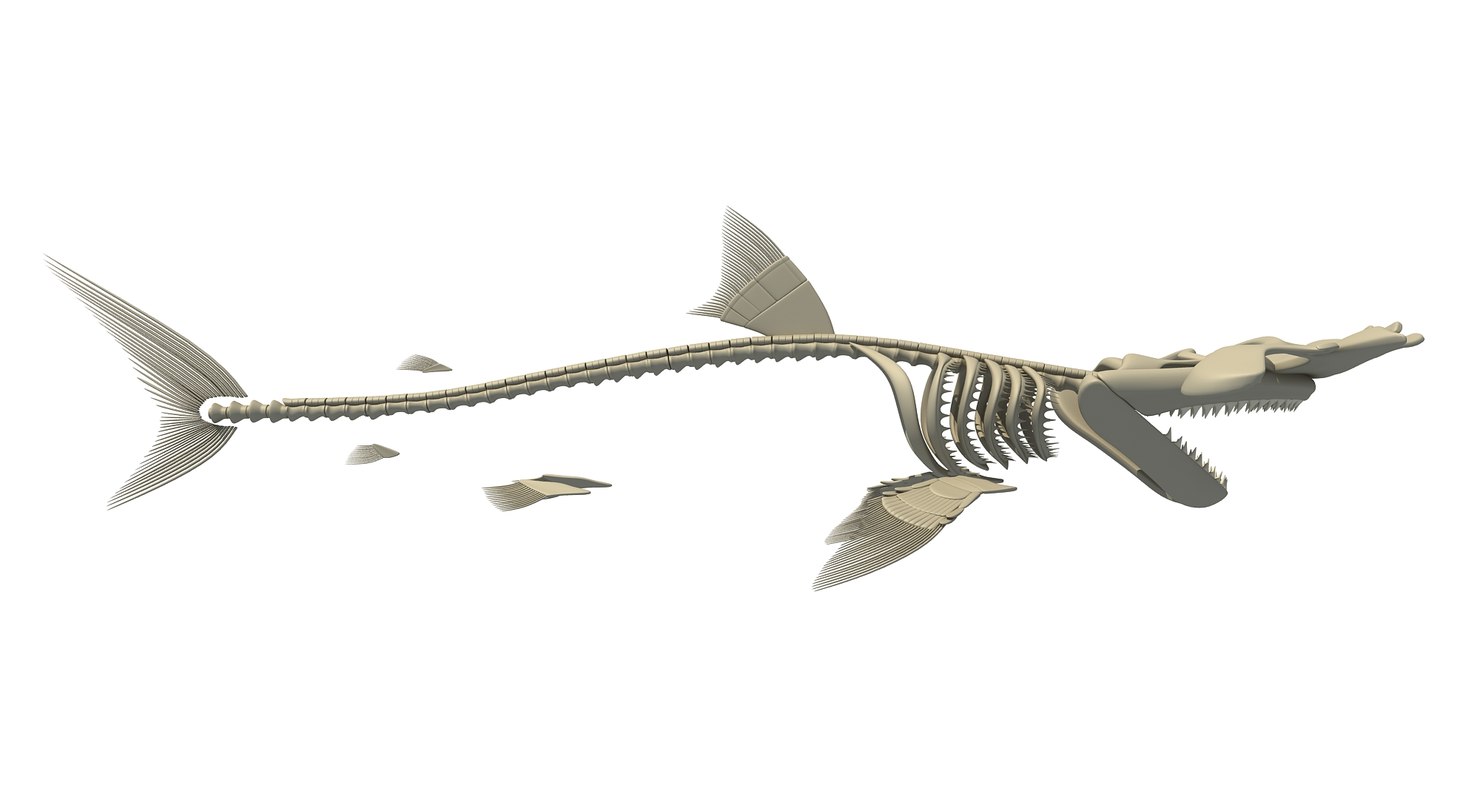Hammerhead Shark Skeleton 3D model CGTrader

hammer shark skull skeleton Google Search Ded Anjimals in 2019
The hammerhead sharks are a group of sharks that form the family Sphyrnidae, named for the unusual and distinctive form of their heads, which are flattened and laterally extended into a cephalofoil (a T-shape or "hammer").

Hammerhead Shark Skeleton 3D Model by 3D Horse
hammerhead shark, (family Sphyrnidae), any of 10 shark species belonging to the genera Sphyrna (9 species) and Eusphyrna (1 species), which are characterized by a flattened hammer- or shovel-shaped head, or cephalofoil. Hammerhead sharks, or sphyrnids, are perhaps the most distinctive and unique of all sharks.

Hammerhead Shark Skeleton Shark skeleton, Hammerhead shark, Shark
The great hammerhead shark is the largest of all nine hammerhead species, reaching an average length of 13.1 feet (4 m) and weight of 500 pounds (230 kg). The longest great hammerhead shark ever recorded was 20 feet (6.1 m) long, and the heaviest great hammerhead shark ever recorded was 991 pounds (450 kg)..

shark skull Google Search Animal skeletons, Hammerhead shark, Meat art
The first 1000 people to use the link will get a free trial of Skillshare Premium Membership: https://skl.sh/realscience04211 Watch this video ad-free on Neb.

Hammerhead Shark Skeleton 3D Model 3D Horse
In a series of striking pictures, the study reveals how, roughly halfway through gestation, two-inch-long bonnethead shark embryos suddenly widen their heads. The growing skull pushes out their still-growing eyes at unnatural-looking angles. In the following weeks, the front of the hammer rounds out as it pushes backward toward the gills.

Hammerhead Shark Skeleton 3D Model 3D Horse
Hammerhead shark evolution.. Because most of the skeleton of sharks is made from soft cartilage, it takes special conditions for this to preserve. The teeth, however, are made from a much tougher material known as dentin, which is harder and denser even than bone. While this enables a powerful bite, it also increases the chance that the.

Hammerhead shark skeleton YouTube
Interesting Hammerhead Shark Facts. 1. The hammerhead part of the shark's head is called a cephalofoil. The hammerhead shark's cephalofoil serves many purposes. It can help them navigate and find food, and it can also help them swim by boosting the hydrodynamic shape of their body. 1. 2.

Hammerhead Shark Skeleton 3D Model by 3D Horse
It's one of evolution's most eccentric creations: a head shaped like a hammer. Now, a study suggests that the hammerhead shark may have evolved its oddly shaped snout to boost the animal.

Hammerhead shark skull skeleton 3D model TurboSquid 1170166
13 to 20 feet Weight: 500 to 1,000 pounds Size relative to a 6-ft man: Hammerhead sharks are consummate predators that use their oddly shaped heads to improve their ability to find prey. Unique.

Hammerhead shark skull skeleton 3D model TurboSquid 1170166
This shark's unusual name comes from the unusual shape of its head, an amazing piece of anatomy built to maximize the fish's ability to find its favorite meal: stingrays. A hammerhead shark uses its wide head to trap stingrays by pinning them to the seafloor. The shark's eye placement, on each end of its very wide head, allows it to scan more area more quickly than other sharks can.

SMOOTH HAMMERHEAD SHARK SKULL JAW REPLICA Hammerhead shark, Animal
How did the Hammerhead Shark Evolve? | BBC Earth BBC Earth 12.4M subscribers Subscribe 54K views 12 years ago An insight into the evolution of the hammer that defines Hammerhead sharks. Great.

HAMMERHEAD SHARKS SKULL Hammerhead sharks Bertolami Fine Art
A shark's lightweight skeleton allows it to put more energy into swimming and use dynamic lift to maintain its place in the water. Senses.. A fisherman holds a freshly cut dorsal fin from a scalloped hammerhead shark (Sphyrna lewini). Every year, humans kill an estimated 100 million sharks. Removing sharks in large numbers can have ripple.

Hammerhead Shark Skeleton 3D Model 3D Horse
Adult sharks can reach a length of 10-15 feet in length and a weight of 300-500 pounds. The longest great hammerhead ever recorded was 20 feet long and the heaviest was 991 pounds. These sharks are usually found eating stingrays but will also take fish and shellfish in their diets.

Hammerhead Shark Skeleton 3D model CGTrader
Skeletal/Muscular System Circulatory Ststem Habitat Skeletal system The skeleton of a shark is entirely composed up of cartilage. It is a bit alarming, but sharks do not have bones. The fact that sharks have cartilage instead of bone is extremely beneficial. Cartilage is lighter than bone; this helps the shark stay afloat.

Hammerhead shark skeleton 3D model TurboSquid 1158988
Hammerhead sharks have a cartilaginous skeleton. Their flexible and strong skeleton allows them to swim and maneuver quickly. Cephalofoil is the name for hammerhead sharks' heads. With one eye on each side, their wide vision helps the sharks scan their surroundings quickly. This helps them find their prey.

Hammerhead Shark Skeleton 3D model CGTrader
With their sandpaper skin, cartilage skeleton, electroreceptive sensors, and rows of dangerous teeth, sharks fascinate many people. However, even within this distinctive group the hammerhead sharks that make up the Sphyrnidae family have attracted a special attention due to the unusual shapes of their namesake heads, called cephalofoils. Several evolutionary benefits of the cephalofoil have.